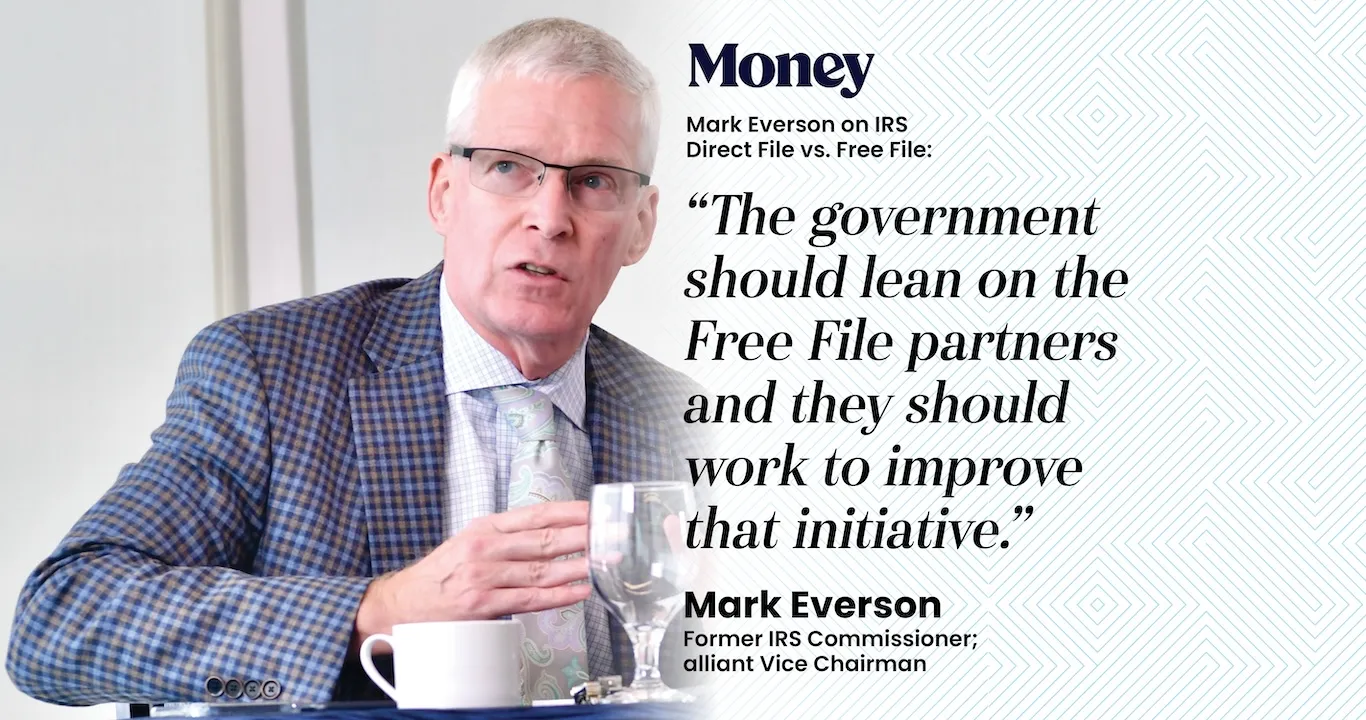PUBLISHED IN
Byline with Eric Hylton, Former IRS Commissioner of the Small Business/Self Employed Division; alliantgroup National Director of Compliance
If you have any questions about this article, please send us a message.
While Covid-19 relief appropriations pulled many businesses from the brink of demise, an onslaught of associated fraud has come to the surface, especially regarding claims for the employee retention credit.
As the IRS has continued to ramp up scrutiny on ERC claims, taxpayers who believe they have filed inaccurate or unsubstantiated ERC claims must weigh their options going forward.
ERC Withdrawal Program
The IRS in October announced a withdrawal process for small business owners and other taxpayers to rescind their claims and prevent future repayment of the credit (plus possible interest and penalties) if the taxpayer hasn’t yet received the refund.
Taxpayers may only use the ERC withdrawal option if all of the below factors apply:
- They made the claim on an adjusted employment tax return (Forms 941-X, 943-X, 944-X, CT-1X)
- They filed their adjusted return only to claim the ERC, and they made no other adjustments
- They want to withdraw the entire amount of their ERC claim
- The IRS hasn’t paid their claim, or the IRS has paid their claim, but they haven’t cashed or deposited the refund check
Withdrawing fraudulent ERC claims won’t exempt a promoter or employer from potential criminal prosecution; qualifying is a fact and circumstance-based analysis. Taxpayers and their advisers should review some of the below potential documentation needed to substantiate an ERC claim:
- An appropriate governmental order suspending the employer’s operations
- Records to prove that more than a nominal portion of business operations were suspended by a government order
- Records demonstrating a significant decline in gross receipts
- Records of which employees received qualified wages and in what amounts
- Records demonstrating the employer is part of an aggregated group
- Relevant payroll tax returns
ERC Claim Red Flags
If substantiating factors are questionable, a business may choose to withdraw their ERC claim. Taxpayer businesses concerned with previously submitted ERC claims should consider the following red flags when deciding whether to withdraw:
- After the announcement of the ERC moratorium and/or the withdrawal program, did the ERC provider close shop?
- Did the business claim the credit for all possible quarters? Businesses rarely qualify for all quarters, especially when claiming for a full or partial shutdown
- Were aggregation rules applied incorrectly, or not at all? If a business has multiple subsidiaries, they have to be considered in aggregate when assessing qualification for the ERC
- Did the ERC application misrepresent what qualified as a governmental order, such as OSHA recommendations?
- Did the application fail to subtract wages used for PPP loan forgiveness?
- Did the claimant fail to amend income tax returns to include the amount of the ERC in taxable income?
Expense Disallowance
When Congress first offered the ERC in 2020, it failed to identify a flaw in the program that created confusion around which year taxpayers should reduce deductible wage expenses. For example, if the ERC was claimed in 2021 for wages in 2020, the IRS that this reduction should occur for the tax year in which the qualified wages were paid or incurred.
There are some unscrupulous promoters who have failed to inform businesses that ERC disallowance rules generally call for the reduction of deductible wage expenses by the amount of the ERC. Key expense disallowance considerations to keep in mind are that:
- The amount of the ERC is taxable through expense disallowance
- Taxpayers must amend 2020 or 2021 income tax returns, as applicable, to reduce the expenses that were used to claim the ERC
- They can’t just include the amount of an ERC credit on their 2022 income tax return
Getting Ahead
Claimants who have already received their ERC funds may still be struggling to make ends meet for their businesses. Despite doubts around their original claim, some may worry about their ability to pay the funds back in full.
In mid-December, Commissioner Danny Werfel approved the ERC voluntary disclosure program, creating a “streamlined avenue for taxpayers to return funds and be afforded a 20% reduction in the amount to return.” To enroll, taxpayers must document the improper ERC claimed and refund received, plus submit their identifying information and that of any preparer or adviser who assisted them with the ERC claim.
Ultimately, a third-party tax professional who wasn’t involved with the initial ERC filing should be able to lend a critical eye when a taxpayer is debating whether to engage with the IRS’s new withdrawal or voluntary disclosure programs.

Acting now to verify the legitimacy of a submitted ERC claim, rather than waiting for a potential IRS audit, will put taxpayer businesses in a much better position to make these specialized claims in the future.
Featured Leadership

Eric Hylton held several prominent positions at the IRS, including serving as Deputy of the Criminal Investigation Division and as CI’s head of International Operations. As National Director of Compliance, Eric employs his years of experience at the IRS to assist alliantgroup’s clients as an ambassador for U.S. small and medium sized businesses (SMBs) and in helping others become tax compliant.



